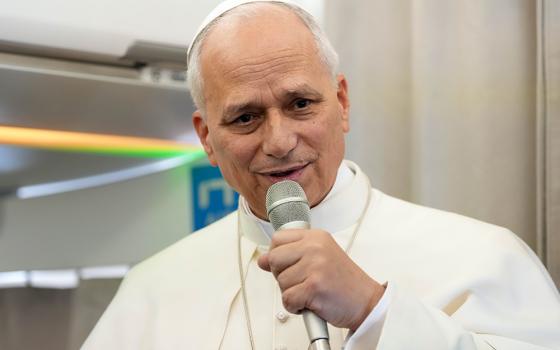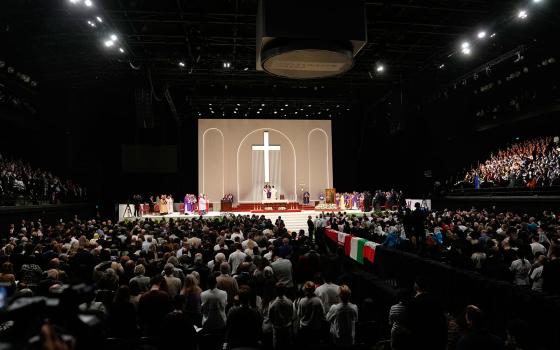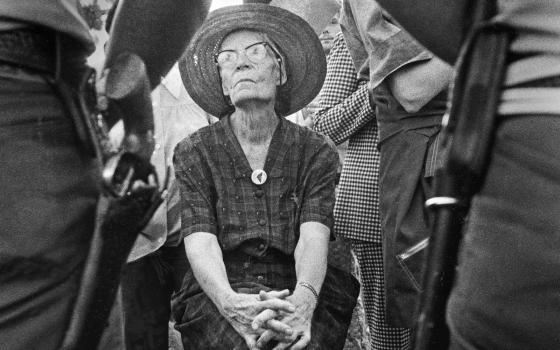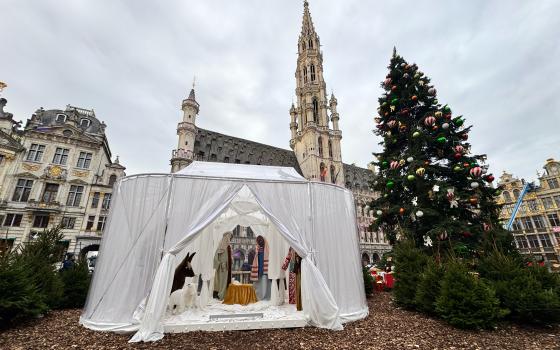A third Catholic diocese in Minnesota facing clergy sexual abuse lawsuits has declared bankruptcy, as New Ulm filed on March 3 for financial reorganization under Chapter 11 of the U.S. Bankruptcy Code.
In announcing the decision, the diocese cited the 101 lawsuits brought against it during the three-year window into the state's statutes of limitations on civil cases involving sexual abuse of minors, which was opened by the 2013 Minnesota Child Victims Act. That window closed May 25, 2016.
Since the law lifted the statutes of limitations, three of six Minnesota dioceses have filed for bankruptcy: first, the St. Paul-Minneapolis archdiocese in January 2015, which was followed that December by the Duluth diocese. Both of those bankruptcies remain ongoing.
In the Twin Cities case, creditors will be mailed ballots in the next 30 days to vote on two reorganization plans — one each put forth by the archdiocese and the creditors' committee — at which point they will have 40 days to respond. The outcome will be taken into account by the judge, who will make the final decision.
New Ulm is the 14th Catholic diocese in the U.S. to file for bankruptcy related to the sexual abuse of children by clergy. In addition, two religious orders have also filed for bankruptcy protection, according to Bishop-Accountability.org.
In a letter to parishioners, Bishop John LeVoir of New Ulm, located roughly 100 miles southwest of the Twin Cities and encompassing 15 counties and 55,000 Catholics, said the decision to file for bankruptcy was not an easy one, but "I am confident it is the right decision."
"Reorganizing our finances under the guidance of the court is the fairest way to compensate victims and survivors of childhood sexual abuse by clergy, while continuing the work of the Church in our parish communities," he said.
The bishop asked that the bankruptcy process not be viewed as the diocese "avoiding its responsibilities," but rather the fairest way to compensate all claimants. He said diocesan assets would be exhausted within the first few cases if it addressed each one by one.
Early in his letter, LeVoir offered his "deepest apologies to these victims and survivors" and said he has met and listened to many of them since becoming bishop in 2008. LeVoir succeeded in New Ulm former Twin Cities Archbishop John Nienstedt, who resigned from that post in June 2015, six months after the archdiocese's bankruptcy filing and 10 days after criminal charges were brought against it.
"[Victims and survivors of abuse] deserve not only our compassion, but also fair compensation to help them in their healing. They should also have our daily prayers for healing," LeVoir said in the letter.
The New Ulm diocese said that the majority of claims involved accusations of abuse occurring between the 1950s and 1970s. It said no priest accused of abuse is in public ministry within the diocese.
A year ago, the rural diocese reached an agreement with the law firm Jeff Anderson & Associates to publish on the diocesan website the names of 16 priests who were found credibly accused of sexually abusing minors. Of those, 13 have died, two were removed from ministry and one was laicized in 1994. The names of another five priests — three of whom have died and two removed from ministry — who have been named in lawsuits are also listed.
"The bankruptcy filing does not stop the pursuit of justice for sexual abuse survivors," said attorney Mike Finnegan of Jeff Anderson & Associates, which is representing approximately 90 of the 101 cases against the diocese, in a statement. "Survivors will continue to seek truth and accountability in the bankruptcy process.
Bankruptcy in the New Ulm diocese caps a week of developments related to the church's clergy sexual abuse crisis, one that began with reports that Pope Francis had "quietly reduced sanctions" against several abuse priests. In between, on March 1, Irish abuse survivor Marie Collins announced her resignation from the Pontifical Commission for the protection of Minors. Collins was the lone active survivor on the commission.
More: "Exclusive: Survivor explains decision to leave Vatican's abuse commission" (March 1, 2017)
LaVoir in a corresponding video message said that lawsuits have also been brought against several parishes. He clarified that the parishes, Catholic schools and other Catholic organizations "are not part of this reorganization filing. They are separate corporations from the diocese."
The separate status of parishes from the diocese is an arrangement required under Minnesota state law, dating back to 1858, but an area likely to be challenged by claimants' attorneys during the bankruptcy process.
In St. Paul-Minneapolis, a bankruptcy judge dismissed a request by creditors' attorneys, including Jeff Anderson, to consolidate the archdiocese's 187 parishes, along with 10 separately incorporated Catholic organizations, including Catholic Cemeteries — what creditors estimated as approaching $2 billion in total assets.
[Brian Roewe is an NCR staff writer. His email address is [email protected]. Follow him on Twitter: @BrianRoewe.]
Editor's Note: A previous version of this story incorrectly stated Duluth was the 14th diocese to file for bankruptcy. It was the 13th diocese to do so.




